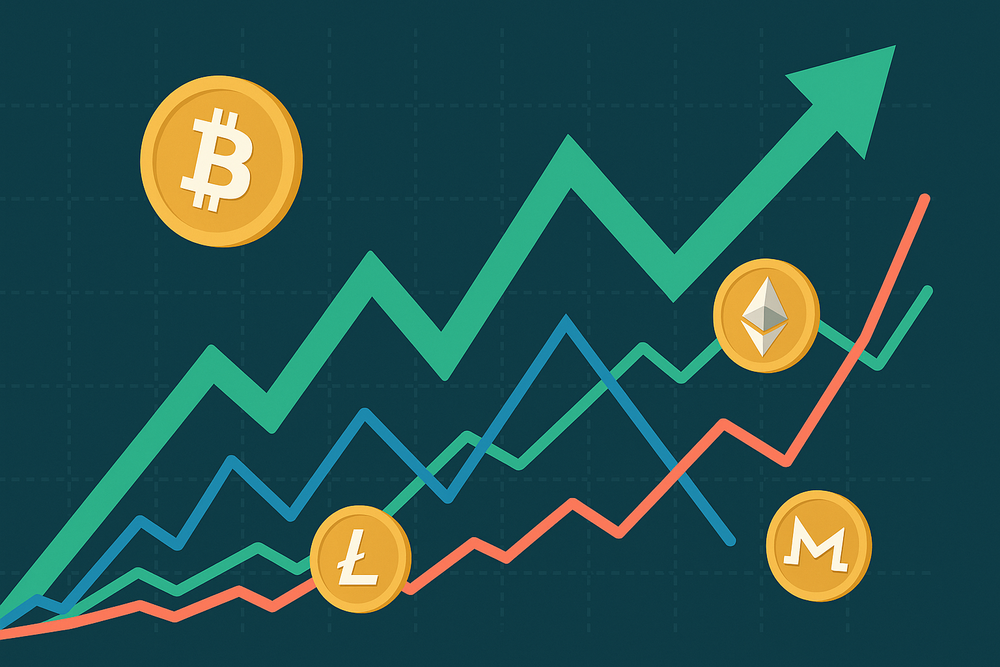Ethereum Dips 55.34% in 24 Hours Amid Network Congestion and Gas Fee Surge
- Ethereum’s price plummeted 55.34% in 24 hours on Aug 27, 2025, driven by network congestion and surging gas fees. - Network traffic spiked to 1.2M transactions, with gas fees averaging $12.75—40% higher than the previous week. - Pending transactions hit a seven-day high of 180,000, forcing users to pay premium fees or wait for confirmations. - The Ethereum Gas Fee Index reached an 11-month high of 127.4, highlighting scalability challenges despite Layer 2 upgrades. - Analysts attribute the drop to short-
A sharp decline in Ethereum’s price has been observed on AUG 27 2025, with the cryptocurrency plunging 55.34% within 24 hours to $4629.74. This recent drop comes amid a period of heightened network activity, increased gas fees, and a backlog of pending transactions.
Network Traffic Surges as ETH Price Tumbles
On the same day, Ethereum’s network experienced a significant spike in transaction volume, with over 1.2 million transactions processed across the blockchain. Gas fees, the cost to execute transactions on the network, surged to an average of $12.75 per transaction, a 40% increase from the previous week. Network analysts attributed the congestion to a combination of smart contract interactions, token swaps, and the activation of several high-traffic decentralized applications.
The elevated network usage appears to have contributed to growing uncertainty among traders and investors, compounding the downward pressure on ETH’s price. High gas costs have historically acted as a deterrent for small-scale traders and dApp users, potentially dampening on-chain activity and influencing investor sentiment.
Pending Transactions Hit Seven-Day High
Ethereum’s mempool—the pool of unconfirmed transactions—reached a seven-day high of over 180,000 unprocessed transactions. This backlog is a direct result of the network's limited capacity and the recent surge in demand. Users attempting to send transactions were forced to either wait for confirmations or pay premium gas fees to prioritize their transactions. This scenario often signals periods of volatility, as users and traders react to increased costs and slower transaction times.
Gas Fee Index Reaches 11-Month High
The Ethereum Gas Fee Index, a metric used to track the average cost of transactions over time, rose to its highest level in over 11 months. The index hit 127.4 on the same day, reflecting the sharp increase in transaction costs. This metric has become a key indicator of Ethereum’s usability and scalability challenges, especially during high-demand periods.
Ethereum’s network congestion has been a recurring issue since the launch of major DeFi and NFT platforms. While Layer 2 solutions and upgrades like the London hard fork have aimed to reduce transaction costs, the recent spike highlights the ongoing challenges in managing scalability and user demand.
Analysts Highlight Short-Term Pressures
Analysts note that while the Ethereum network remains fundamentally sound, the current price correction reflects short-term pressures rather than a structural issue. The drop in price coincided with increased network usage and rising operational costs for users. While the broader one-month and one-year trends remain positive, the immediate volatility is a reminder of the sensitivity of the Ethereum market to on-chain performance metrics and network usability.
Disclaimer: The content of this article solely reflects the author's opinion and does not represent the platform in any capacity. This article is not intended to serve as a reference for making investment decisions.
You may also like
Hunting in Contradictions: Saying Goodbye to Narratives, Embracing Volatility

Ripple's Strategic Alliances and High-Profile Events as Catalysts for XRP Value Appreciation
- XRP's 2025 value surge stems from strategic alliances, regulatory clarity, and macroeconomic trends, positioning it as a cross-border payments bridge. - Partnerships with SBI, Tranglo, and CBDC pilots in Bhutan/Palau expanded XRP's institutional adoption, reducing remittance costs by 50% and enabling 1,729% ODL volume growth. - SEC's June 2025 non-security ruling and ETF approvals unlocked $8.4B capital potential, while EVM sidechain innovations attracted DeFi developers with hybrid finance solutions. -

Altcoin Capital Rotation in 2025: Unlocking Presale Gems Before Institutional Adoption
- 2025 crypto capital is shifting from Bitcoin to altcoin presales, driven by scalability solutions and macro trends like AI and meme culture. - Bitcoin Hyper ($HYPER) introduces SVM-powered Layer 2 for Bitcoin, while Wall Street Pepe ($WEPE) merges meme virality with trading signals and staking rewards. - Projects like MAXI and SNORT attract $1-3.5M through high APYs and utility-driven innovations, absorbing $6-8B in Bitcoin profit-taking during market dips. - Institutional adoption potential grows as pro

Metaplanet's $881M Bitcoin Play: A Strategic Hedge in a Weak Yen World
- Metaplanet, a Tokyo-listed firm, raised $881M via stock issuance to purchase 18,991 BTC at $102,712/coin, hedging against Japan's weak yen and inflation. - The company aims to own 1% of Bitcoin's total supply (210,000 BTC) by 2027, leveraging Japan's favorable crypto regulations and global institutional demand. - This move redefines corporate treasury strategies, attracting global investors while mitigating Bitcoin volatility through over-collateralization and diversified revenue streams. - Regulatory ta
